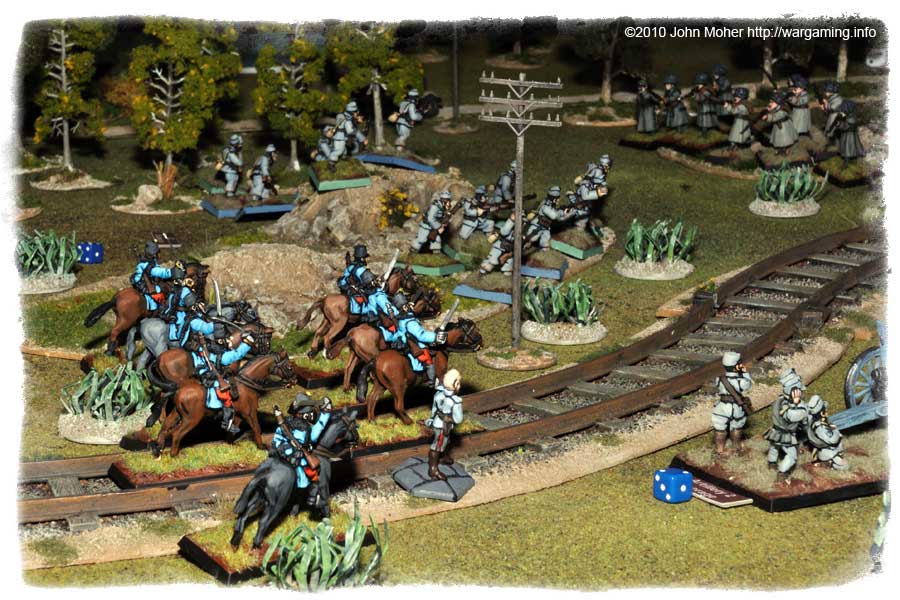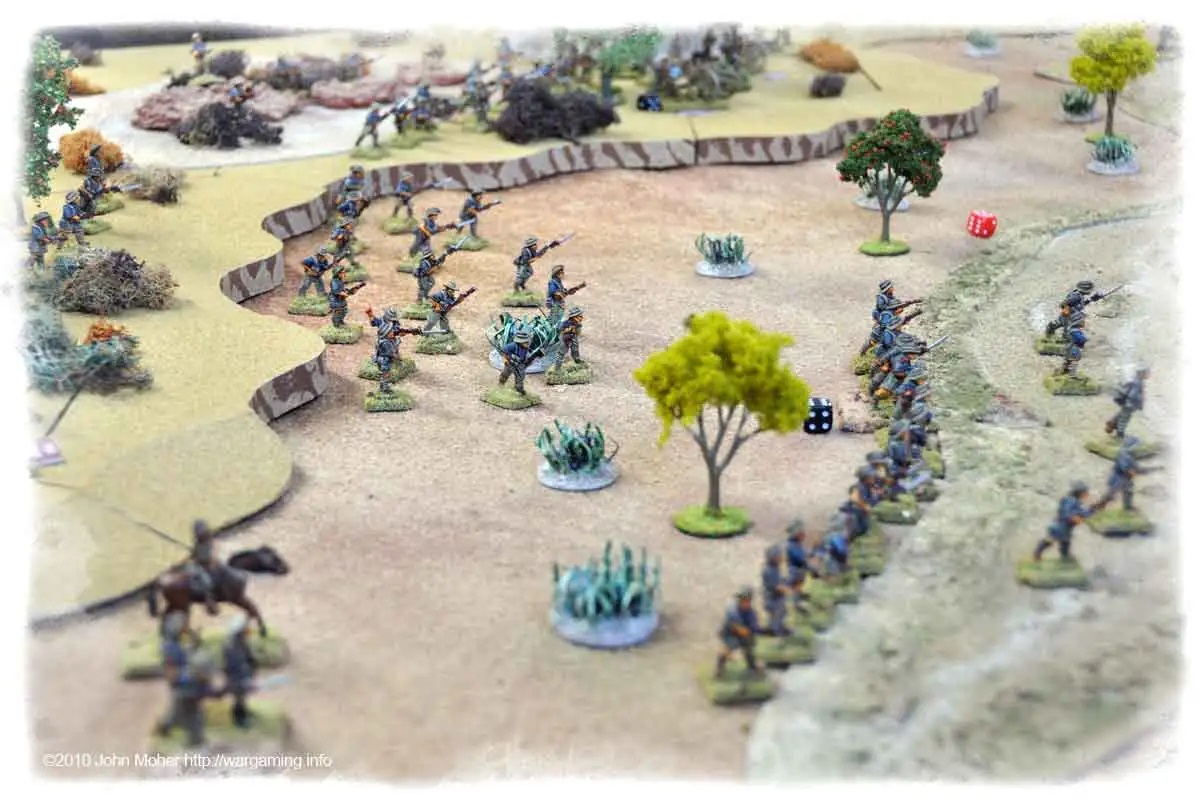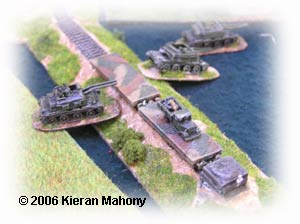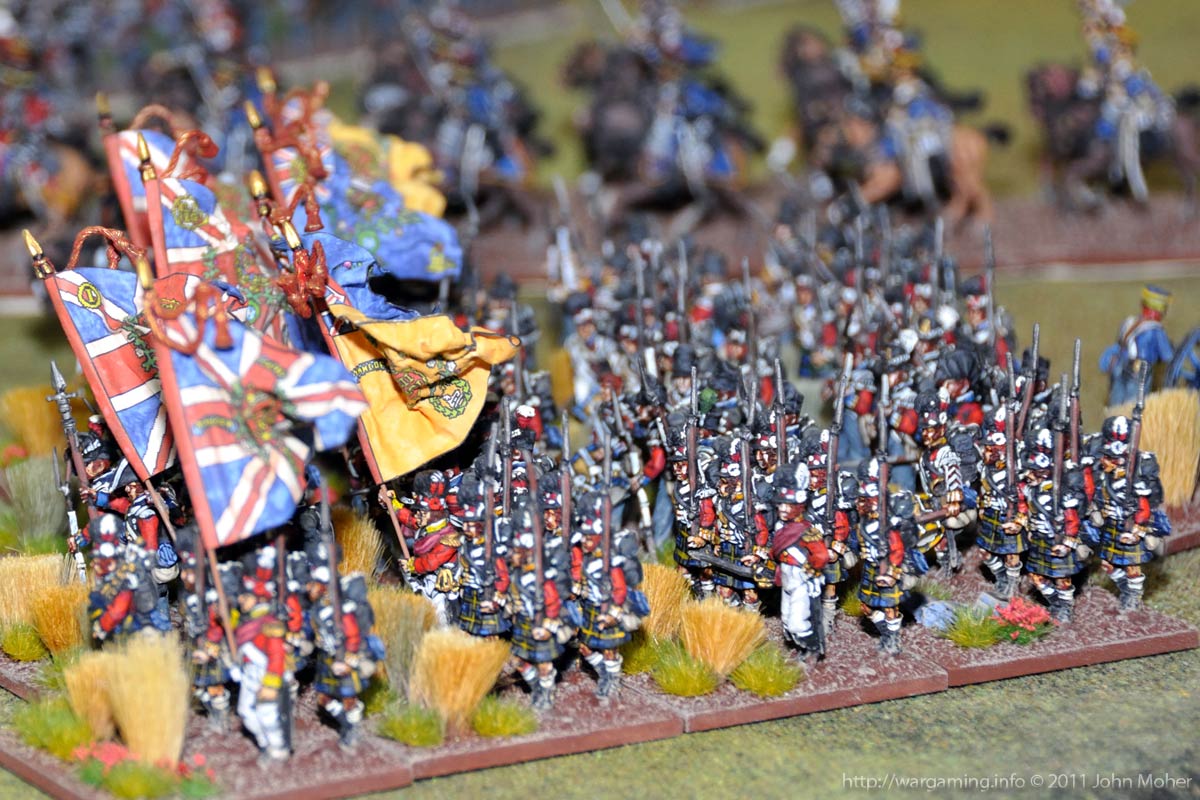Somewhere in Galicia in sight of the Carpathians, 1916 – the Brusilov offensive is in full swing and the Austro-Hungarian front line has temporarily collapsed – The Russian forces are pouring into and across Galicia rapidly and in huge numbers… Brusilov has achieved a stunning success (advancing up to 40 miles on a wide front in just a few weeks)… The Austro-Hungarians are in turmoil, and Archduke Josef Ferdinand has only just escaped Lutsk by the skin of his teeth as the speed of the Austro-Hungarian line’s disintegration meant Cossacks had already entered the city before the Austro-Hungarian Army Command realised the extent of the breakthrough!
Continue reading “Don’t Let Them Get The Commissariat’s Train!”Category: World War 1 (The Great War)
Siberian Assault: The Troops From The North
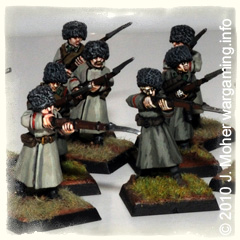
Following on from the World War 1 Russian Artillery my unit of Siberians is now ready for action – although I plan to ultimately rebase these off those dreadful plastic Games Workshop Warhammer bases and onto good quality Litko plywood ones. Although the could actually be nearly any Russian Infantry unit in winter clothing (e.g. Regiments from Moscow wore similar dress just with less ‘woolier’ papaha hats). As with many of my WW1 Russians these were an opportunity buy from another Colonial/WW1 Gamer, and as a result most of the figures were painted to a very good standard. However as with the artillery battery some additional touch up work has been done to these chaps. Siberian Rifles (all Siberian Regiments were designated Rifle Regiments rather than Infantry or Line Regiments) and in cold weather typically wore a great coat called a shinel (which was often a greyish-brown colour).
Continue reading “Siberian Assault: The Troops From The North”
World War 1 Russian Artillery
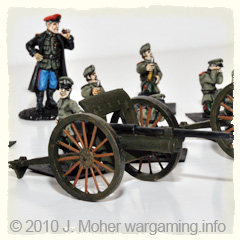
As things slowly progress with my 28mm World War 1 forces for TSATF the Russian Artillery Battery is now complete and awaiting basing. It consists of 3 (what I believe to be are) 7.62cm Putilov Field Guns. However the long barrels on the Battle Honors models are a bit of a mystery as the standard M1902 model had a relatively short barrel (you can see some good images of the M1902 at the Landships Website). Each model represents 2 actual real guns, so this represents a battery of 6 actual guns (the Russians actually had 8 gun batteries in their Infantry Division Artillery Brigades, but I think 4 models in a typical TSATF game is getting a bit hardcore). Anyway here is an assortment of photos of my artillery battery (along with a General)…
I have not decided whether the General shall be my Russian C-in-C, Infantry Battalion Commander, or (as depicted here) the Artillery Battery Commander…
von Lettow-Vorbeck in East Africa
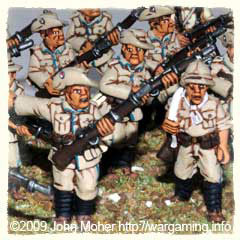
Another of the World War I ‘side shows’ I’m keen on is the campaigns in East Africa against the German East Africa Colony (today primarily Tanzania). I have had some units for this (and pre-war 1890-1914 Colonial actions) for some time (i.e. about 2 years), albeit waiting for basing to be completed… This theatre has lots of opportunity for variety, both in pre-war Colonial actions against native tribesmen, and the Great War period, where the action spilled over into the areas of modern Kenya, Uganda, Rhodesia, Mozambique, & Zambia. This is an excuse to put up some initial pictures of them (albeit with unfinished basing), and the figures depicted are from the first unit each of European and Askari Schutztruppe, and the unit of Seebatallione Marines.
The Carpathians Will Rumble
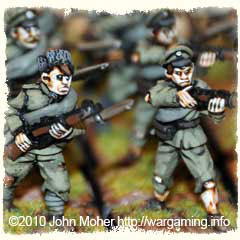
The Russians and Austro-Hungarians arrive!
The latest addition to my World War I stable has been both Russians & Austro-Hungarians – which will be ideal for not only the Carpathian Campaigns & Brusilov Offensive; but also the Russians will also serve for Caucasian Campaigns against the Turks; and as allies for my long planned Rumanian Troops which the Austro-Hungarians will provide opposition for! I’ve taken some quick preliminary photos of these chaps to get a basic gallery up until such time as I have reorganised them and/or played a game and taken photos…
As mentioned in previous articles I’ll be using the TSATF (The Sword and the Flame) for my 28mm WW1 gaming and as such troops will be organised into Infantry Companies of 20 figs each, Cavalry in Squadrons of 12 figs each, and MGs & Artillery in Platoons, Companies, or Batteries of 1-3 guns (each model representing 2 real life guns).
A Wadi near Chunuk Bair
As the morning fog cleared the companies of Australian & British Troops moved into the wadi below the height known as Chunuk Bair – their mission to secure the hills on the far side for the following battalions to assault the mastiff itself. The good news was little or no Turkish resistance was expected – no troops had been sighted in the area as this was not the point where the main assault had occurred the first 2 days…
Continue reading “A Wadi near Chunuk Bair”Johnny Turk & the ANZACs
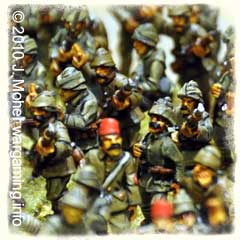
For quite some time I’ve been wanting to get into some Great War gaming in 28mm using TSATF. As such I have a small force of German Schutztruppe for Africa that can double as pre-WW1 Colonial forces or the German East or West African forces in WW1 (such as von Lettow-Vorbeck’s). A chance purchase on EBay of some Middle East/African theatre WW1 British in Sun Helmets (for use as opponents to the above) led to me acquiring a large force of Turks & ANZACs suitable for Gallipoli & Palestine – so as a result I have now kick-started by 28mm WW1 forces enmasse!
The figures came from the author of a TSATF Great War variant (Andrew Champion) and are available on the Side Shows of the Great War Yahoo Group – Australian visitors may recognise them from a large Gallipoli game staged at CANCON in 2007 by Andrew.
Wings of War: WWI & WWII Air Combat
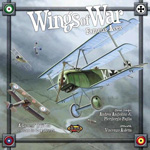 Wings of War (WOW) is a World War I (& World War II) air combat game, based around using cards for manoeuvring your aircraft – the aircraft themselves can be miniatures, or for the beginner can just use the cards supplied in the game. I’ve had an interest in World War I air combat for a while, and previously played with my own system using cards and a gridded playing surface – but the beauty of WOW is you no longer need the grid – as you actually lay out the cards on the playing surface to manoeuvre your aircraft. The World War I aircraft are 1/144th Scale (again compatible with large ranges of existing models which I have quite a few of). For World War II they have brought out 1/196th Aircraft which should be compatible with existing 1/200th scale models (again of which I have a few). I hope to have more content here eventually, including photos, after action reports, and more. Meanwhile you can read more at the official Wings of War website… or at Board Game Geek…
Wings of War (WOW) is a World War I (& World War II) air combat game, based around using cards for manoeuvring your aircraft – the aircraft themselves can be miniatures, or for the beginner can just use the cards supplied in the game. I’ve had an interest in World War I air combat for a while, and previously played with my own system using cards and a gridded playing surface – but the beauty of WOW is you no longer need the grid – as you actually lay out the cards on the playing surface to manoeuvre your aircraft. The World War I aircraft are 1/144th Scale (again compatible with large ranges of existing models which I have quite a few of). For World War II they have brought out 1/196th Aircraft which should be compatible with existing 1/200th scale models (again of which I have a few). I hope to have more content here eventually, including photos, after action reports, and more. Meanwhile you can read more at the official Wings of War website… or at Board Game Geek…
WW2 (& WW1) Mosquito Fleets
Having been recently inspired by a David Manley article reprinted* in the latest SOTCW (Society of Twentieth Century Wargamers) Journal for fast play Motor Torpedo Boat rules for World War II, I am looking to dust off my reasonable fleet of 1/600th scale vessels that have been living in boxes for 15 years – since my days of playing “Fast Attack!” Looking forward to hauling these out soon so keep an eye out for some new material later in 2009 on this… While I am mainly a fan of Skytrex 1/600th models I’ve been further inspired to do WWI as well by Dave G’s range of models at PT Dockyard showing what the possibilities are.
(*David Manley’s fast play MTB rules were first published in “Wargames Journal” issue 9 at the start of 2008).
World War I & Related Conflicts
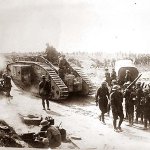 While the origins of World War I (know at the time as “The” Great War) lie back in the latter part of the 19th Century from a wargaming perspective it really begins with the two Balkan Wars (in 1912-13), although the Russo-Japanese War (in 1904-1905) is also nominally part of this period; while the latter saw the first significant use of modern ‘Dreadnought’ style warships with a few large guns in rotating turrets, the former was the immediate forerunner to the out break of WWI and occurred in land warfare terms after the culmination of about 30 years of continuous major improvements in Weapons (Pistols, Rifles, Machine-Guns, Quick Firing Artillery, etc).
While the origins of World War I (know at the time as “The” Great War) lie back in the latter part of the 19th Century from a wargaming perspective it really begins with the two Balkan Wars (in 1912-13), although the Russo-Japanese War (in 1904-1905) is also nominally part of this period; while the latter saw the first significant use of modern ‘Dreadnought’ style warships with a few large guns in rotating turrets, the former was the immediate forerunner to the out break of WWI and occurred in land warfare terms after the culmination of about 30 years of continuous major improvements in Weapons (Pistols, Rifles, Machine-Guns, Quick Firing Artillery, etc).
Wargaming Scales
Figure scales are expressed two ways, either as a simple measurement, e.g. 25mm, defining how high a figure of a normal man or woman stands or as a ratio, e.g. 1/48th, defining how big a model vehicle, vessel, aircraft, or construction is in relation to the real thing. The emphasis here is on the former classification with the latter provided where possible as an approximate comparison.
Continue reading “Wargaming Scales”Brief History Of Wargaming
The following is a brief history of modern wargaming told in quotes from various wargaming books & authors:
“It was in Europe that the early forms of wargaming gradually took on a more sophisticated appearance. During the Seventeenth Century several variations on the basic game of chess were introduced. During the Eighteenth Century a number of games were introduced into France which departed from the idea of pieces and which used series of cards designed to impart basic military knowledge to the players. Also, at about this time, silver model soldiers were being used at the French Court to instruct the future king, Louis XIV, in the art of war” – David Nash (Wargames – 1974).
Continue reading “Brief History Of Wargaming”